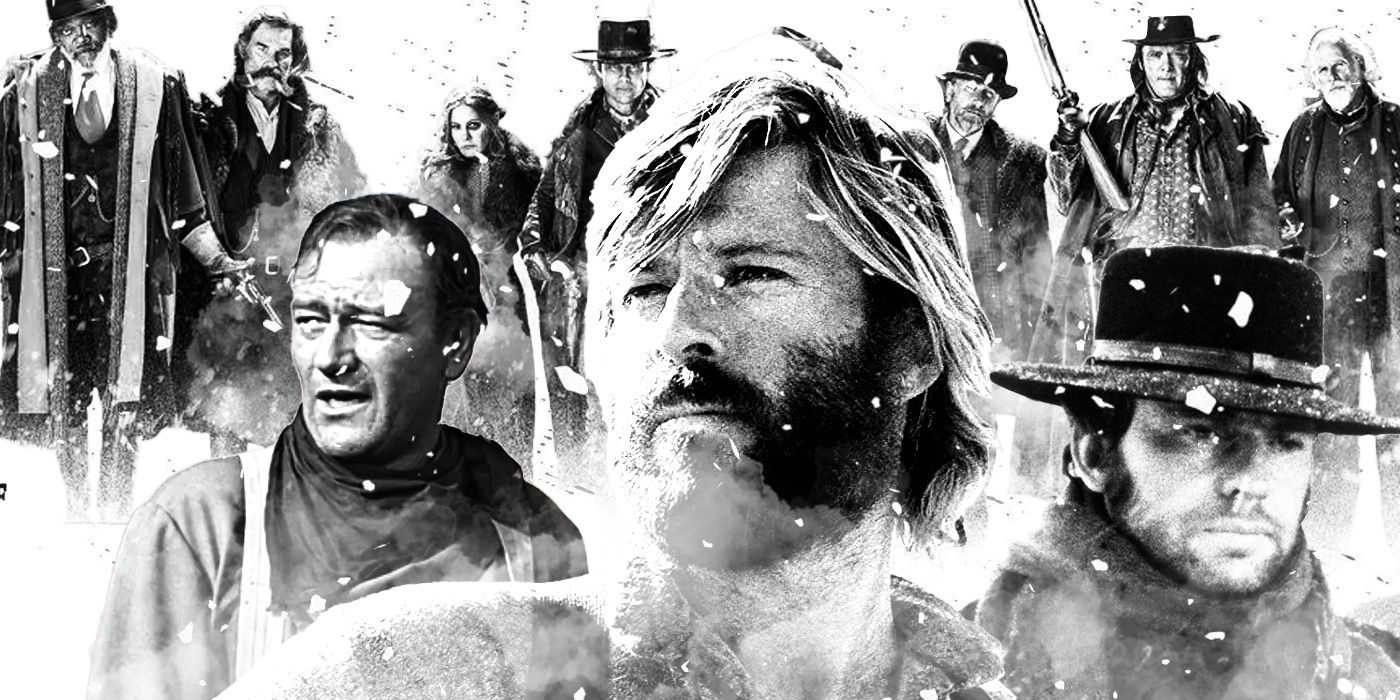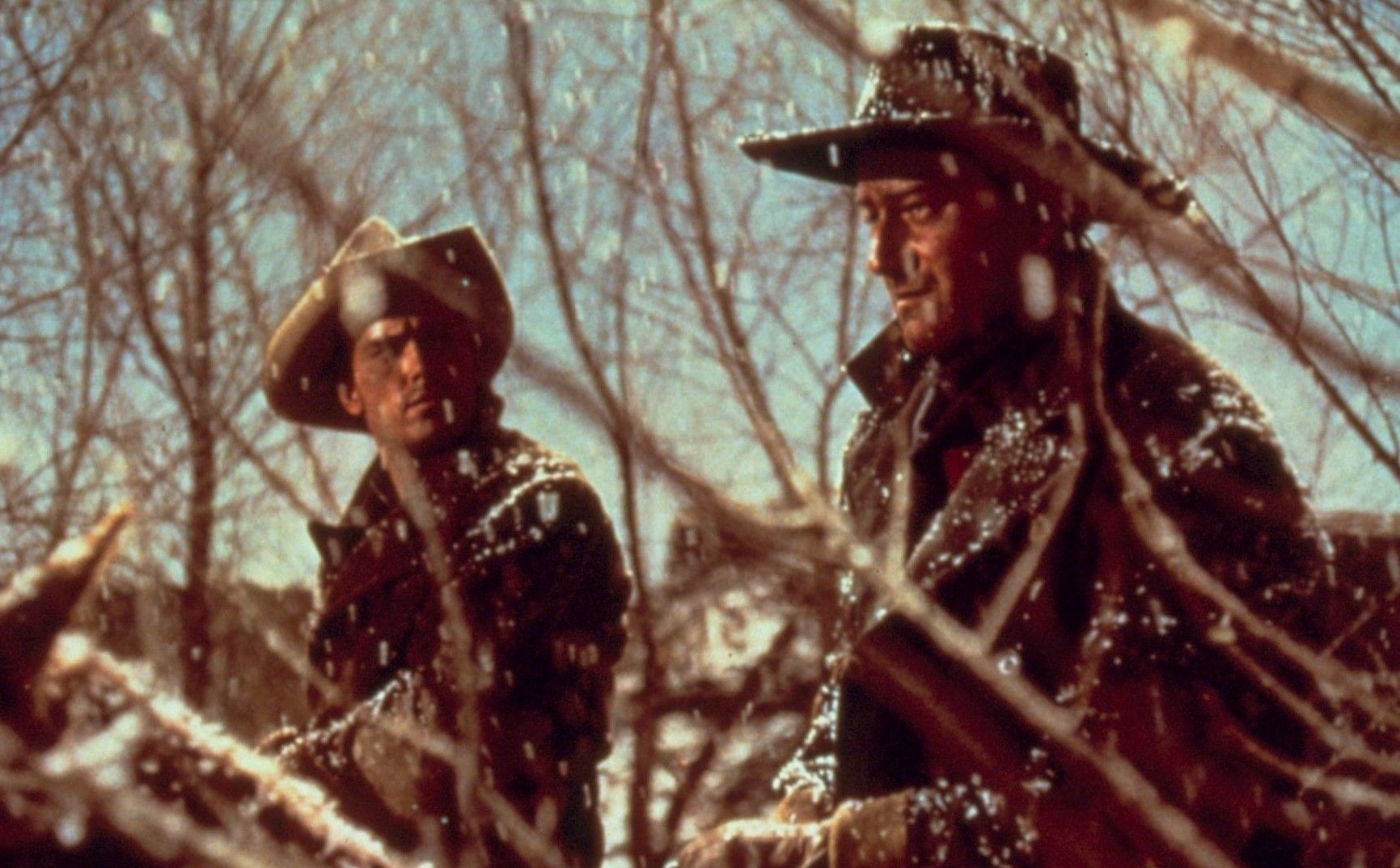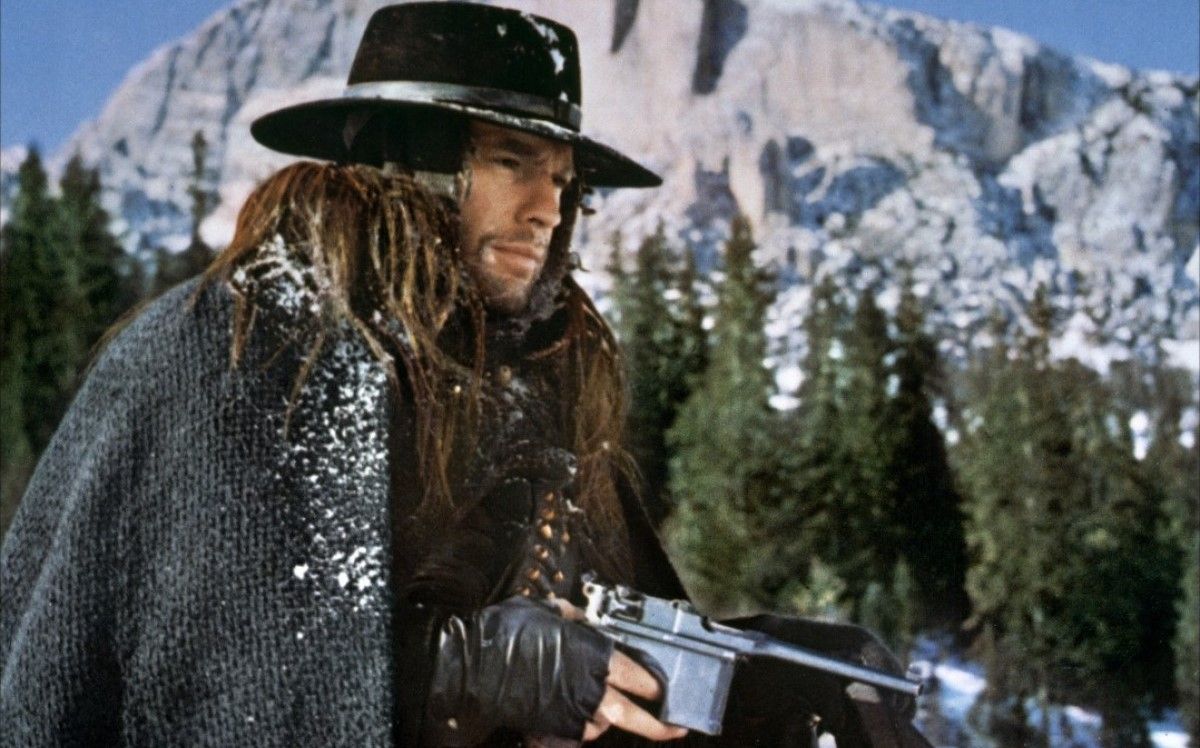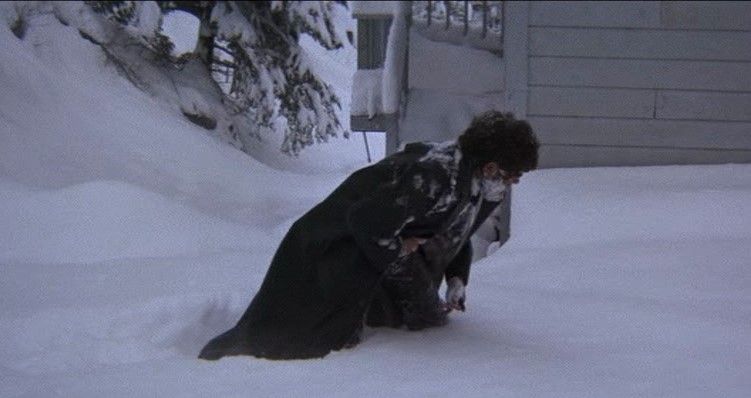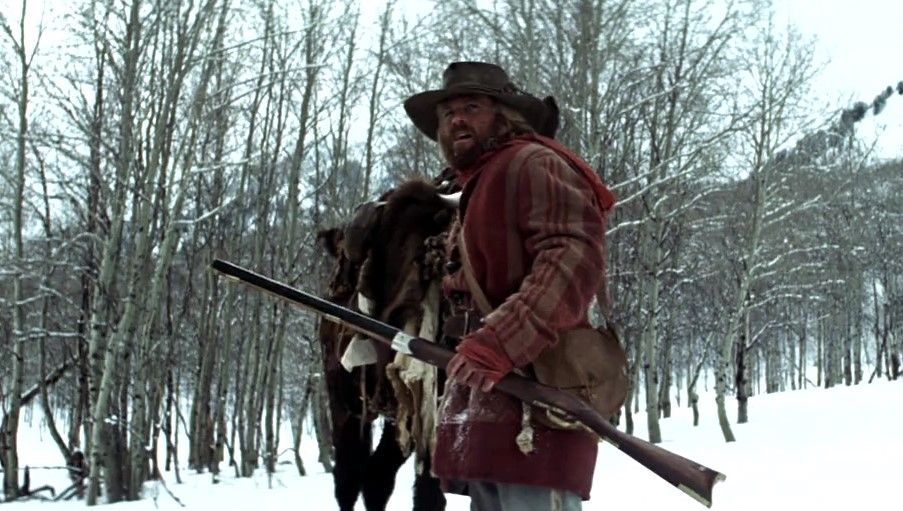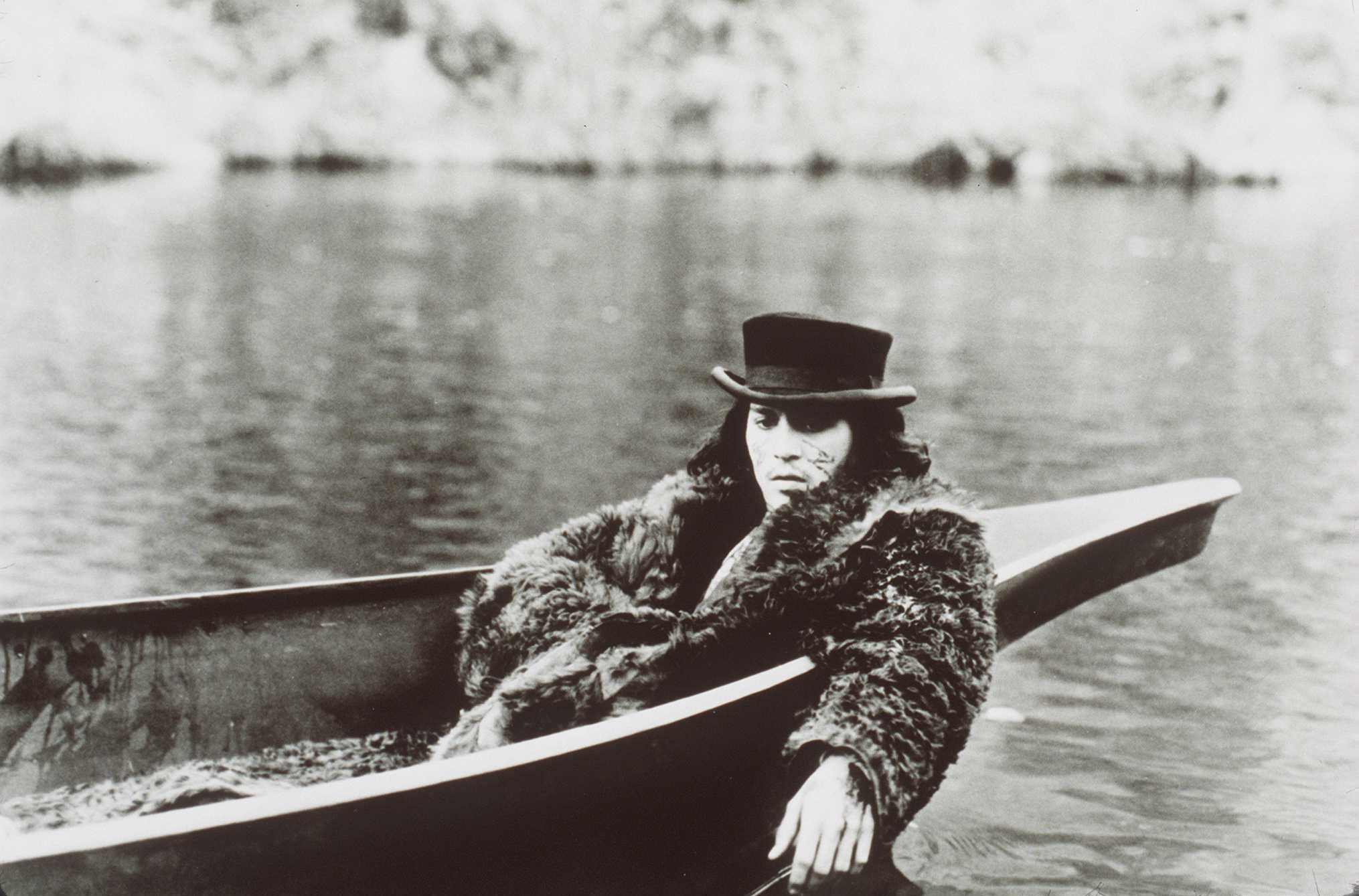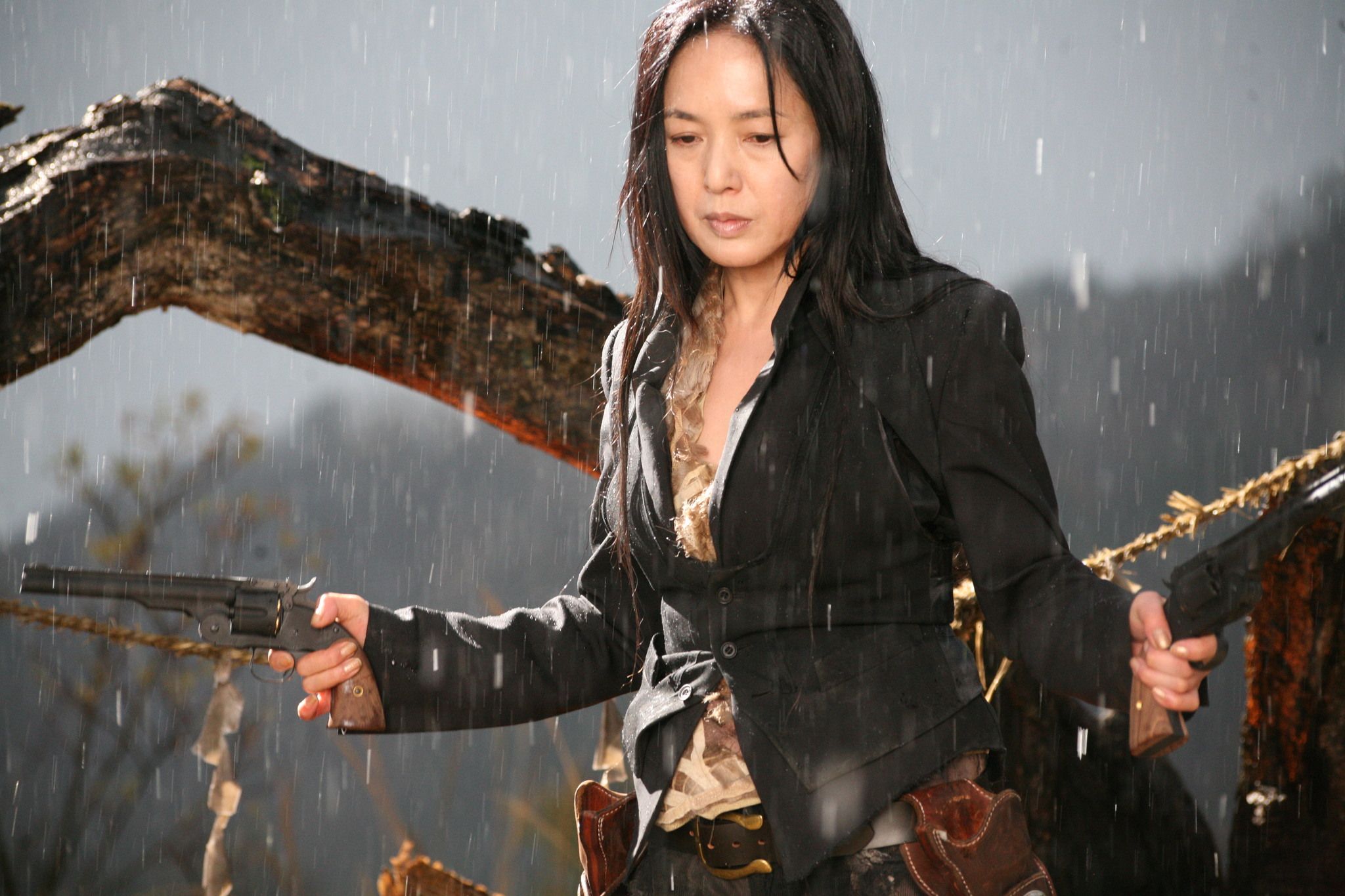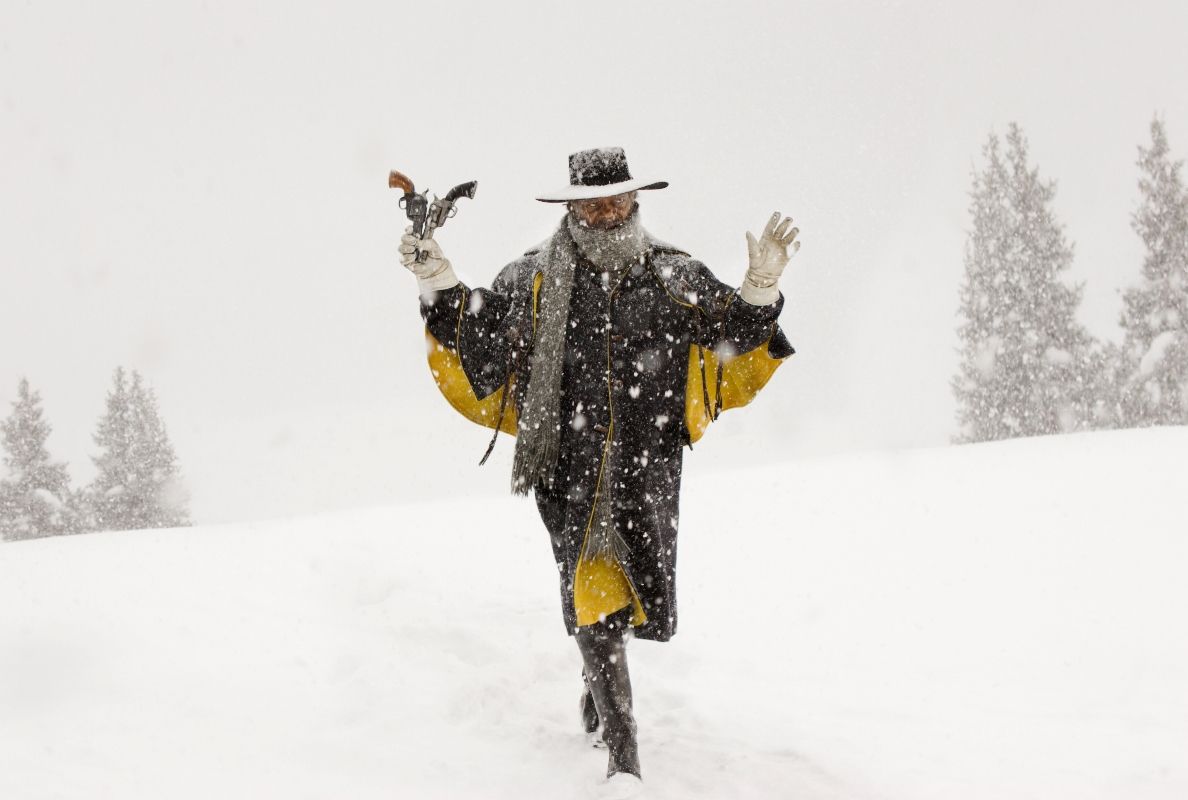Typically associated with expansive desert vistas and sun-drenched ghost towns, the Western genre is oftentimes placed within a restrictive category of summer-tinged spaces where personal roaming and political conquest seem never-ending. Although films like The Hateful Eight present the West as a space of cold isolation and cabin-bound claustrophobia in a popular context, Quentin Tarantino’s Western thriller is one of many wintry westerns that critique the glorified colonialism at the core of the genre through the visual melancholy of icy terrain and the interiority of warm wooden shacks.
By upending audience expectations of hand-crafted civilizations with endless room for expansion and a radiant yet endlessly ironic hope for new opportunity, winter westerns subvert the genre through Hitchcockian suspense building in the midst of the small snow-covered towns. These films present the West as a disillusioned space of interpersonal drama and thwarted wish fulfillment. Since the Western genre seems as expansive as the widescreen tableaus in a John Ford film, here is a list of seven entry-points into the snowy western subgenre, which will certainly thrill and entertain both Western fans, anti-Western audiences, and suspense-loving spectators alike.
The Searchers (1956)
Considered by many to be both the pinnacle of the Classical Western and the pivot point toward a revisionist cinematic West, John Ford’s The Searchers is a monumental achievement, both literally in terms of setting and figuratively in terms of artistic prowess. While the film is not strictly a winter western, the extended snow-covered sequences of John Wayne’s Ethan Edwards, a hardened and hateful Civil War veteran, searching for his niece maximize the visual power of shifting seasons, illustrating a futility in Ethan’s quest for family restoration, ideological retribution, and personal salvation. In the end, the snow signals a disillusionment similar to the door closing on Ethan in the film’s iconic final shot, ambiguously reckoning with the complicated pain that Western cinema projects. In other words, the West as Ethan knew it is dead, and there is no place for outlaws anymore.
The Great Silence (1968)
A stunning yet still underseen film by Sergio Corbucci, The Great Silence beautifully represents both the winter Western and the spaghetti Western. Through its ensemble of multinational icons like Germany’s Klaus Kinski, France’s Jean-Louis Trintignant, and America’s Vonetta McGee, The Great Silence makes the snowy frontier into a meditation on belonging, as a band of rogue outlaws attempts to slaughter a group of refugees as they seek a safe new home. While the typical dubbing that characterizes spaghetti Westerns may be distracting for some viewers initially, The Great Silence actually accommodates for the shift by centering its narrative on Kinski’s mute cowboy named Silence as the source of safe passage for the refugees, rereading the multilingual Western as a mournful manifesto for empathy to unfamiliar experiences.
McCabe and Mrs. Miller (1971)
From the gauzy cinematography by Vilmos Zsigmond (The Deer Hunter) to the haunting Leonard Cohen ballads populating the soundtrack, McCabe and Mrs. Miller is a masterful melancholic statement on the Death of the Western Myth by Robert Altman. Meshing the woefully misguided gambler John McCabe (Warren Beatty) with the secretive brothel madam Mrs. Miller (Julie Christie), Altman’s film plays as a metaphor for the greed-driven failure of capitalism to build a flourishing new society, as the entrepreneurial endeavors of the protagonists nearly cause the town to crumble. Perhaps more than any other Western on this list, the sheer amount of snowfall on-screen imbues the spectacle with a sense of danger and doom for the characters, making the climax of the film all the more devastating and mysterious. Anchored by career-best performances from both Warren Beatty and Julie Christie, McCabe and Mrs. Miller transcends the Western genre as an essential film of the 1970s and a high point in the career of Robert Altman.
Jeremiah Johnson (1972)
Predating the existential prowess of survivalist stories like The Revenant, Jeremiah Johnson follows Robert Redford’s protagonist as he attempts to dwell within the harsh majesty of the Rocky Mountains. While many previous films in the genre diminish both the power of nature and the traditions of various Native American tribes in favor of tales of colonial conquest, Jeremiah Johnson adds nuance to the figure of the cowboy as an active (albeit still imperfect) observer rather than a superficial agitator. This provides space for deeply human perspectives of the Flathead and Crow tribes throughout Jeremiah’s mountain-bound experience. Possessing much of the symbolic power that snow-capped peaks represent in McCabe and Mrs. Miller, Jeremiah Johnson trades in the collective disillusionment for a personal poignancy, revealing the consequences of attempting to conquer nature through empathetic eyes towards flawed figures rather than an absurdist perspective of human failure.
Dead Man (1995)
Updating the winter Western for the era of grunge rock, Jim Jarmusch’s Dead Man is a weird and wonderful slow-burn saga of an accidental outlaw attempting to outrun death. Played with a timid anxiety and off-kilter self-awareness by Johnny Depp, William Blake ebbs and flows through the final days of his life like the icy river portending his early death, guided by a Native American sage named Nobody. Jarmusch’s film captures the particular mournfulness of fading winter through brilliant black-and-white cinematography by Robby Müller and an apocalyptic electric guitar-driven score by Neil Young. While this dream-like Western may not be for everyone, it will certainly reward anyone who can remain on its wavelength.
Sukiyaki Western Django (2007)
If Dead Man moves the Western into a space of surreal longing, Sukiyaki Western Django pushes the boundaries of the genre beyond recognition. Blending the visuality of spaghetti Westerns and samurai films with a kaleidoscopic sense of history, Takashi Miike’s jab at the genre plays out more like watching all of your favorite Westerns at once than a cohesive singular story, which sets the film apart as particularly rewatchable and endlessly entertaining. Culminating in a snowy shootout that meshes swordplay with gunfighting, Sukiyaki Western Django defies explanation and expectation in its mobilization of action aesthetics, offering something for every type of movie-goer along the way.
The Hateful Eight (2015)
Perhaps the essential modern touchstone in the winter Western subgenre, Tarantino’s fusion of television ensemble Westerns, The Thing’s paranoia, and an Agatha Christie-tinged chamber drama allowed the writer-director to hone his skills for contained narratives, advancing the suspense through a claustrophobic camera and airtight screenplay. Featuring an ensemble of Tarantino stalwarts like Samuel L. Jackson and Kurt Russell as well as newcomers like Jennifer Jason Leigh, The Hateful Eight is an exercise in mounting tension and interpersonal distrust as the snowed-in crew’s cabin fever grows. Whether you choose to see this in its theatrical cut or the Netflix-released extended edition, The Hateful Eight delivers on the promise of its title through the fiendish behavior of the film’s central rogues’ gallery, toying with tonal shifts at every storytelling twist.

